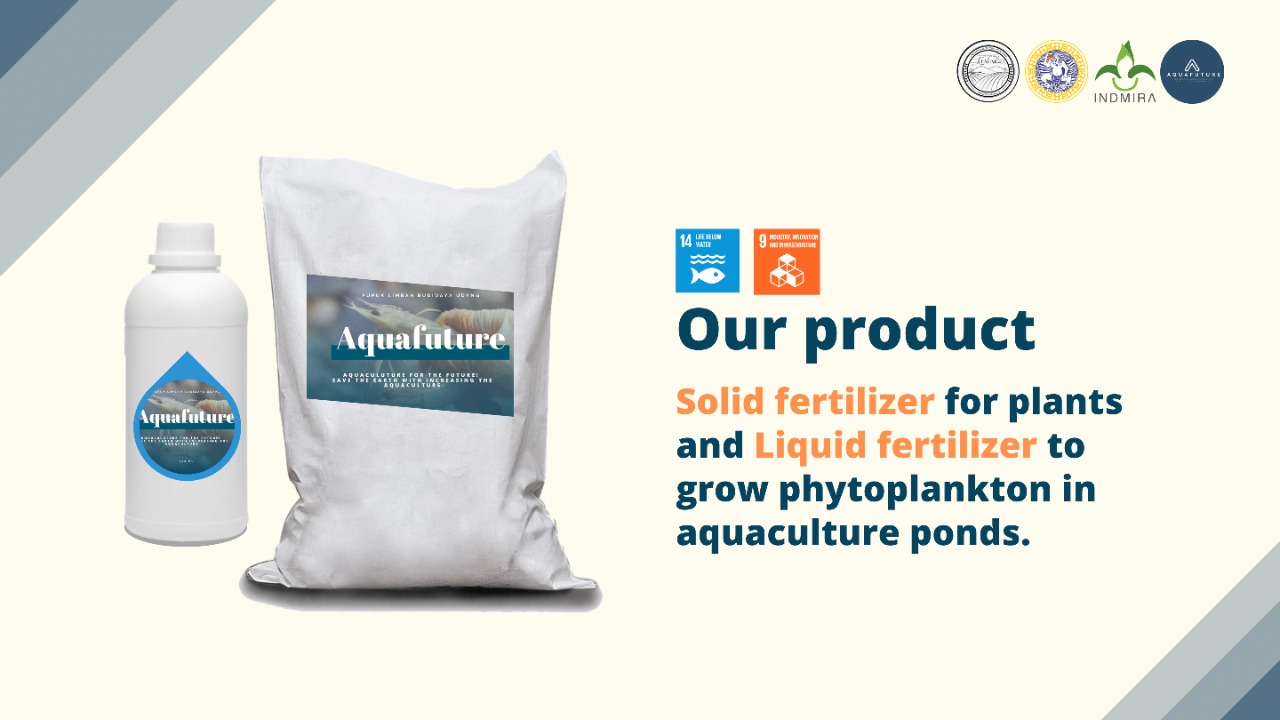UNAIR NEWS – Four students of Universitas Airlangga presented an innovation for solid and liquid fertilizers from shrimp waste called POLI UDANG.
For their idea, the Aquafuture team consisting of Heri Prasetyoning Tias, Putri Mardhotillah, Cahaya Mahadiva, dan Anggraeni Tirta Sari won 2nd Place at the national pitch deck in the Hack A Farm competition held by PT Indmira on Friday, January 28, 2022.
The disposal of shrimp cultivation waste, which was often ignored, was why the team took the idea. Although the government has provided an Environmental Impact Analysis (AMDAL), many farmers still do not apply it as it pollutes the waters and harmful organisms.
“There have been many public complaints related to shrimp cultivation waste. Moreover, the waste contains phosphate and nitrogen compounds that are toxic metabolites and are very dangerous,” said Aquafuture CMO Putri Mardhotillah.
She also mentioned that nitrogen causes an explosion of algae growth, damaging the food chain of marine ecosystems and the death of organisms. Putri also revealed that the Indonesian sea receives 267 thousand tons of shrimp cultivation waste per 3 months.
In line with that, Aquafuture CEO Heri Prasetyoning Tias said that Shrimp Waste Processed Fertilizer (POLI UDANG) could minimize chemical fertilizer and be an alternative to government subsidy fertilizers. Solid fertilizer measuring 5 kg, continued Tias, can only be used for agricultural land. While liquid fertilizer measuring 500 mL can be used for farmland and fisheries.
“This liquid type of POLI UDANG is useful for growing natural feed, phytoplankton so that it can facilitate farmers and fish farmers in Indonesia in cultivation,” said Tias, the FPK UNAIR student.
“This product will continue to be developed and tested. In the future, this product will be marketed with a price range of 30,000 per bottle and 25,000 per sack,” she added.
Furthermore, the Aquafuture team also supports several SDGs, including SDG 14 regarding life below water that supports the sustainability of marine ecosystems and SDG 9 that encourages innovation through relationships with industry.
“Hopefully, this product can be an effective fertilizer and widely marketed so that it can provide solutions to the problem of sustainable shrimp farming waste,” Tias hoped.
Author: Viradyah Lulut Santosa
Editor: Nuri Hermawan





